Concert
Yo-Yo Ma, cello
The Caroline and James Taylor Concert
“Dedicated to Andre Previn, whose wry wit, virtuosity,
and irreverent genius knew no bounds”
The Bach Project
Tanglewood
Lenox, MA
August 11, 2019, 8:00pm
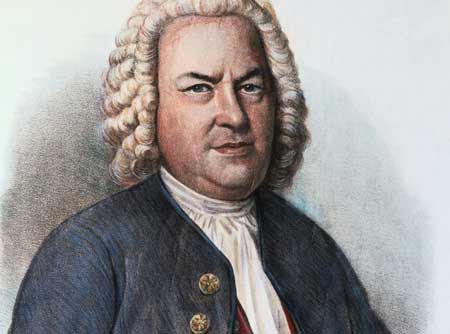
J.S. Bach died at the age of sixty-five in 1750, but it took about a century and a half for the great Catalan cellist, Pablo Casals, to turn Bach’s Cello Suites into part of the standard cello repertory. Before that time, the suites were regarded as little more than etudes, exercises, albeit ingenious ones, for developing cello technique. Singlehandedly, Casals rediscovered and represented them, and the cello and music world has not been the same ever since.
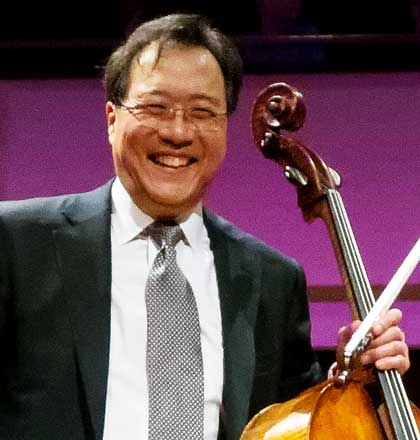
Yo-Yo Ma, the great American cello virtuoso, now in his sixties, has performed the Bach Suites for decades and has recorded them several times. I have two sets of those recordings, and the evolution of Ma’s interpretation is palpable. The first set is, without question, masterful in its competence – crisp, lean, to the point. But when, a couple of decades later, Ma collaborated with a variety of performance artists to re-present the Suites, he recorded them with a new gusto, a broader, more vivid sensibility, a warmth and flexibility that the earlier recording had not displayed to the same degree.
Now, yet again, as part of The Bach Project, a mission by Ma to integrate the playing of the Suites thirty-six times around the world and to do so in collaboration with days of social action that precede each concert, there is new revelation to be had. Not only is the effort endowed with Ma’s humanitarianism, but in strict musical terms, the re-visioning of the Suites is revelatory.
One can only say that the evolution of Ma’s interpretation is like the aging of a distinctively fine wine. One cannot exactly point to a particular quality or character that makes the new interpretation exude an even greater degree of fineness than before, but the experience of it is palpable.
Ma played the Suites in one fell swoop, his singular form settled in the middle of the massive concert shed at Tanglewood, giving his audience brief periods to stretch (and he indicated so by gesture) between each of the Suites. The whole thing took two hours, more or less – intense, vivid, fulfilling, and, in many ways, intoxicating.
The deftness of Ma’s technique is apparent throughout, with nimble interplays of divided bowings and legato ones, making for a thrilling and graceful interplay of textures and forms. In the good old days, under Casals’ influence, the Suites used to be played largely with long bows, at least in the movements that would allow them. In the past couple of decades, the tradition has become to play many of those notes with divided bows, which has been thought more true to Bach’s original baroque vision. Ma’s response is artful and modulated – playing a hybrid of long and short, always trading off to make the textures reverberate, to fall into the natural flow of each of the movements.
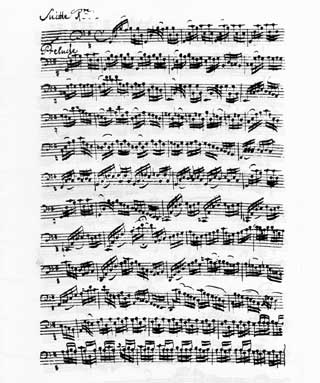
“Prelude, Suite 1 in G”
Transcribed by Anna Magdalena Bach
Of course, the Suites are mostly dances. Each one begins with a Prelude and is followed by an Allemande, a gracefully sweeping dance, and a Courante, a more punctuated and bouncy one. Following those is a Sarabande, usually slow and somewhat languid, allowing the sense of elevated limbs and slow, sweeping gestures. At the end of each Suite is a Gigue (jig), lively, frolicsome, bouncy. But intervening between the Sarabande and the Gigue are a pair of movements which vary three times throughout the Suites: in the first two, they are Minuets, in the second two they are Bourrées, and in the last two they are Gavottes. All of them are sweet, relatively short, and lively.
That these movements are dances may give the impression that they are easy to play. Not so! As the Suites progress, things get more difficult, moving from the relatively manageable first Suite in G major to the fiendishly difficult sixth Suite in D major. They all bounce and are delightful, each in its own way, but the cost of the bouncing, especially in that D major Suite, is technically high.
To watch Ma play these is almost as much of a treat as to listen to him. At times his gaze settles with a distant focus somewhere out into the audience. At other times, his eyes are raises and closed. And, at other times, his forehead is contained and all of his energies are concentrated on conveying the music through the challenging thicket that some of the movements present.
Masterful, graceful, and, during the breaks, filled with warm humorous gestures and brief commentaries, Ma’s presence radiates, filled with blossoms and gems.
At the end of the Suites, Ma thanked the audience for their attention and patience. Indeed, to listen to the Suites straight through requires a lot of concentration, and, by and large, the audience was riveted.
In a final note, Ma commented that the Tanglewood tradition was always marked by an interest in younger talent. As part of this, he noted, they had identified a young man named Jimmy who was going to come out. “Jimmy” aka James Taylor, who, with his wife, sponsored this concert, emerged with guitar in hand. Saying that he was a bit out of his league and that the closest he would likely ever get to playing a Suite was what followed, a great rendition of Sweet (sic) Baby James with Ma playing side cello masterfully. It was a total delight and indeed a sweetly moving capstone to a riveting and memorable recital.
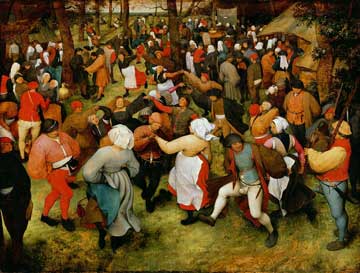
“The Wedding Dance” (1566)
Detroit Institute of the Arts
Detroit, Michigan, USA
Some specific notes on the performance:
Suite No. 1 in G, BWV 1007
Prelude
Such fluid detached ease and grace with subtle modulations of tone. Very regular rhythmically but very light and transparent.
Allemande
Preserves the line, but with interesting combinations of detachment and legato. In the repeat, lighter and more distant, and then, after the double bar in the minor part, feathery distance. The shepherd calls; the sheep walk home with ease and grace, as one sees the vista that overlooks the hills.
Courante
Delicate and light, like dragonflies playing, tousling. After the double bar, a reconsideration: is this the life I want? But then, the beer comes and I truly revel in my happiness. A flurry of small vital successes come to fruition, and in the reload of the second repeat, a more severe rethinking yields ultimate joy.
Sarabande
Such an interesting broken chord, with those open strings, paving the intro! A long and graceful dance with an aged wizard. After the double bar, more considered thought and deeper magic. Limpid playing, nothing gruff, no dark spells, but just the magic of the wilderness as it practically disappears into itself.
Menuett I; Menuett II
I: So graceful and light, and not over-rushed; a little broader on the retrial. II: Mysterious in its minorhood, until that one major note shows its gallant face. Lovely combination of long and short bows. Return to I: free and easy, now singing richly and exuberantly.
Gigue
Kick up those heels, but not too wildly! Again, major and minor easily intertangle.
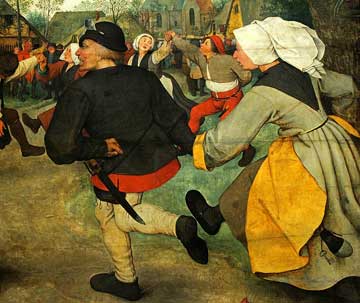
“Peasant Dance” (1568, detail)
Kunsthistorisches Museum
Vienna, Austria
Suite No. 2 in D minor, BWV 1008
Prelude
A wisp, a hunt, for an intro – searching for silence in the deep while questing upwards. Gradually building in force, but without corruption. Beautiful unfolding of double stops. At the end, equally fascinating and effective breaking of double stops into component parts.
Allemande
Separated and abbreviated, telling a quaint little story, perhaps of a hobbit out for a stroll, nothing too severe. At the double bar, a rich basso declaring itself with dignity to the end.
Courante
Speedy! Where are we rushing? One almost hears the feet tagging along. Flashman! Off to the races! But it really sings this way.
Sarabande
Low and slow, stepping over rocks in a clear stream. Long and stealthy – touching only on the balls of the feet, teetering on the rocks, but always balanced. After the double bar, brooding and dark, but with a kind of yearning. Dark, yet light and so clear, so convincing. In the end, the single, solitary low note.
Menuett I; Menuett II
I: Dignified but recalcitrant. She won’t dance with just anyone! But how lightly she steps. II: So sweet, airless, flowing, like a ray of questions. Return of I: So clear and dignified, uncorrupted, though rich in the innards.
Gigue
A bouncy reconsideration, penetrating and reverberating. Hopping and stepping high, it ends with zip and flair.
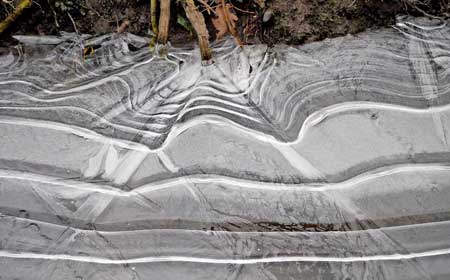
The Guardian
Suite No. 3 in C, BWV 1009
Ma’s remarks: Who knew that Bach, writing about the infinite variety of life in his work, can bring us so together? Would like to thank all those who try to make others’ lives better. One of the most celebratory Suites – let’s celebrate together!
Prelude
It cascades down into the minor valley from the major and leverages itself with a tremolo of introspection, the bass so vivid and so clearly evident. Flawless and meticulous management of sweeping arpeggios. Big questions near the end are followed by sweeping resolutions.
Allemande
An impish ride, full of bounces. In the recap, a bit more legato, and, after the double bar, a higher, lighter, intro. Then newly probing introspection, the playfulness radiating on Ma’s face.
Courante
How much fun – he takes off! In parallel octave descents, a magical wildness. With gusto he punches the panels and pulls the dancers onto the floor. How charged the dastardly dancer, how they rebel, then join in.
Sarabande
Sleek and quaint. An offhand remark becomes a prayer. Recapitulated – more modulated – with a smile. He breaks those double stops so interestingly – and to the end, a whisper and an appeal.
Bourrée I; Bourrée II
I: Charged and light, particularly after the bar, the bass so vivid and present. II: Barely visible, stretched and lean, like a whistle. In the repeat: how light can it be? Return of I: A restored ecosystem, light and happy but not frivolous.
Gigue
A whiz – exciting, riveting. He bites into it like a shark that weaves a tale (sic, tail). After the bar: it gets solid, the gears at earth-speed though flying. Truly a celebration.
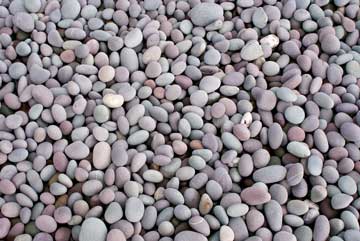
Suite No. 4 in E-flat BWV 1010
Prelude
Limpid. It’s a pool, Monet land, then it plumbs deep, proceeds to question at lower levels. The questions broaden. Working way down the scale, proceeding through the channels of classification, then the heat of dissipation.
Allemande
A paced walk, holding the air. Sewn together phrases, like a quilt. Then, in minor, ending with light touch.
Courante
A lot of sweetly separated notes. On return, gruffly activated specs with placid thoughts, played attenuando in slides downward.
Sarabande
So clear, like a deep pool. Who knew one could see and swim within it? In the rebound, like taffy, slow and resilient. He pauses on the low notes as though waiting for the dog on the walk, then ends definitely.
Bourrée I; Bourrée II
Lively and quaint, then, on repeat, a little deeper. II: Shadows and ruffles, a double step, then on I’s return: stepping with broader strokes.
Gigue
Love those triplets! Descending to nowhere with Bach’s endless drive and cleverness.
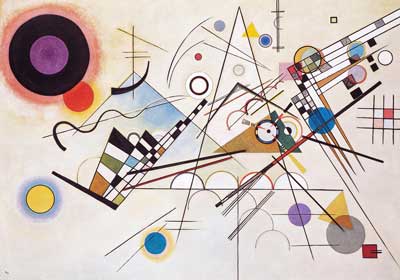
“Composition VIII” (1923)
Suite No. 5 in C minor, BWV 1011
Ma: I turn to these Suites for solace. I want to dedicate this Suite to all who have endured loss of loved ones, health, or dignity.
Prelude
Almost as though it comes from nowhere. The tonality is magical, turning into mist. Bowing swapped as in a wind. Then at the bottom of a swamp we watch the lotus flower grow, breaking its way through the surface.
Allemande
As mysterious as the night. At times, with eyes set, at times wafting into a careful indifference, glowing against the moon. Wandering endlessly, plain then heartfelt, sweetly receding into the skies.
Courante
There’s a cleverness in those tangled feet, and then they just end abruptly!
Sarabande
That sweet lonely detail of the heart. How does the heart sway as it sings of love and loss, and the dismal distance? Attenuated like breath, held in suspense.
Gavotte I; Gavotte II
I: Even this comes from nowhere, then very regal and straightforward. Lovely, light double stops. II: Scary triplets, like a seablaze.
Gigue
Reflective, thoughtful, distant, elongated. We are climbing a riverbed, ending almost insignificantly at its source. Even the audience doesn’t realize it’s the end, and the next one follows without a break.

“Diagonal” (1923)
Suite No. 6 in G, BWV 1012
Prelude
Ferocious, suspenseful. Thumb section done impeccably. Lower down and later he goes impossibly fast, breezing through with gusto.
Allemande
Fast and glancing, as though words filled in between. Play with poise and restraint, repeated with even more grace. Another glistening, a peacock showing its colors, redolent. And the endlessness of it! It overflows, then ends in a whimper.
Courante
Frolicsome procreation, stumbling, then jumping. Slices of the light moon, with filigree. It draws a smile.
Sarabande
Broadly stretching, a t’ai chi of the Baroque. All is in the process. Church bells in the wildness. Tough double stop section played with grace, like an eternal choir of gazelles and swans.
Gavotte I; Gavotte II
I: Impossibly Light, sweet with all the great double stops; how does he manage it so easily? II: Another sweet chorus of double stops. Holds the hare without blinking. Return to I: Lively and wonderful.
Gigue
What an ending! Sweet, and forcefully frolicsome, playful, and almost humorously blithe.
In a word: Magnificent!
– BADMan
Leave a Reply